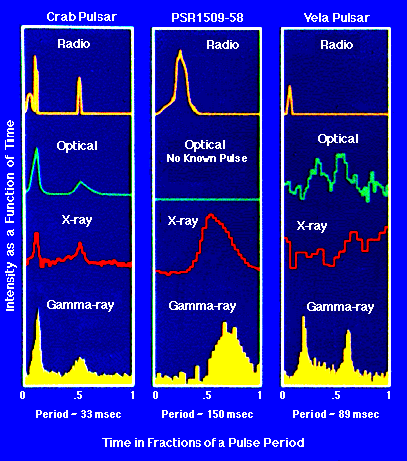Pulsars
Yuri Lyubarsky
Enigmatic, rapidly pulsating radio sources, called pulsars, were discovered more than 40 years ago. They produce beams of radio waves which sweep around the sky like a lighthouse, often hundreds of times a second. Some of them generate also intense beams of gamma-rays. It was found that the beams are radiated out from rapidly rotating, extremely dense neutron stars; a typical pulsar is only around 10 km in diameter (with the mass as large as the solar mass!) and has a magnetic field trillions of times stronger than Earth’s. Such extreme physical conditions are well beyond those attainable in terrestrial laboratories and it is no wonder that, in spite of the great amount of effort that has been expended to understand physics of pulsars, the mechanisms that generate their intense radiation beams remain largely a mystery. We develop theoretical models of the electromagnetic emission from the relativistic plasma within the pulsar magnetosphere. Confronting the calculated emission pattern with observations would tell us a great deal about the fundamental physics behind pulsars.
 |
  |
| Figure 1: Pulsar magnetosphere. | Figure 2: Pulse shapes of a few pulsars from the radio to gamma-ray bands. |